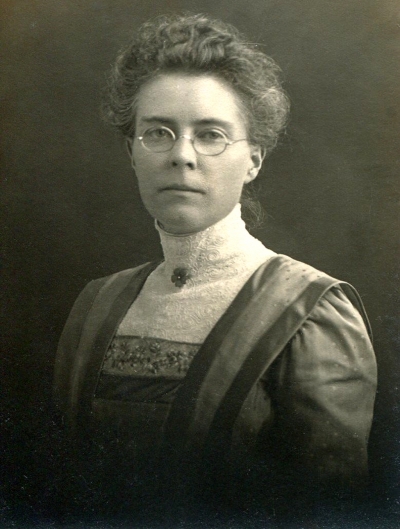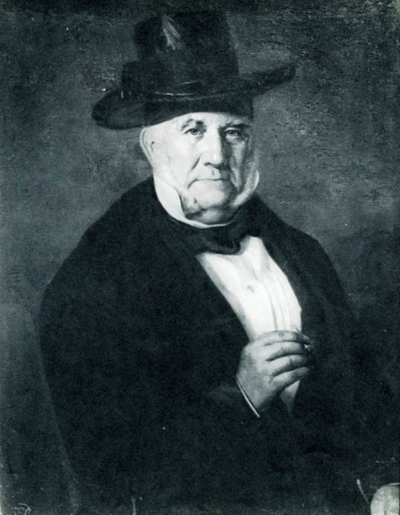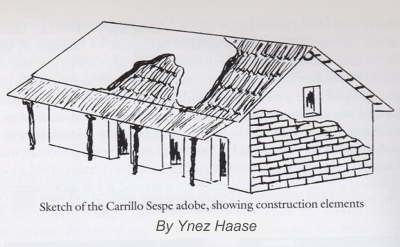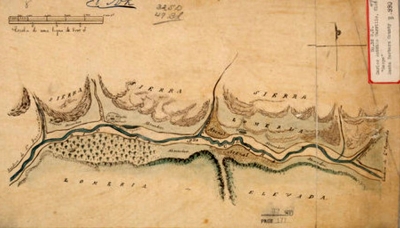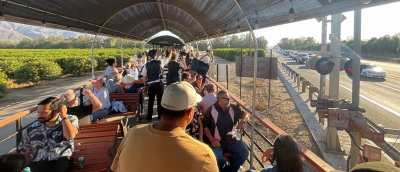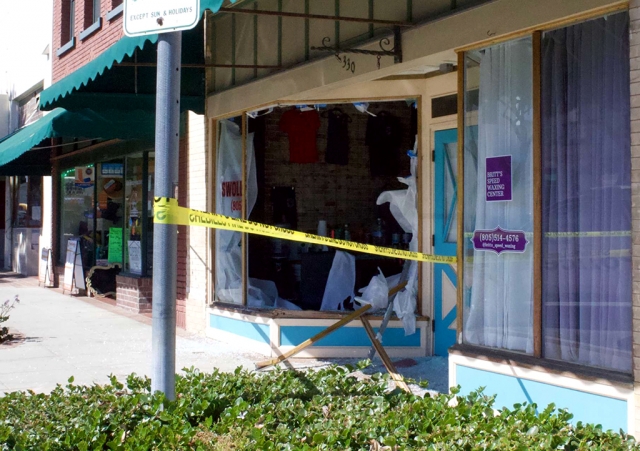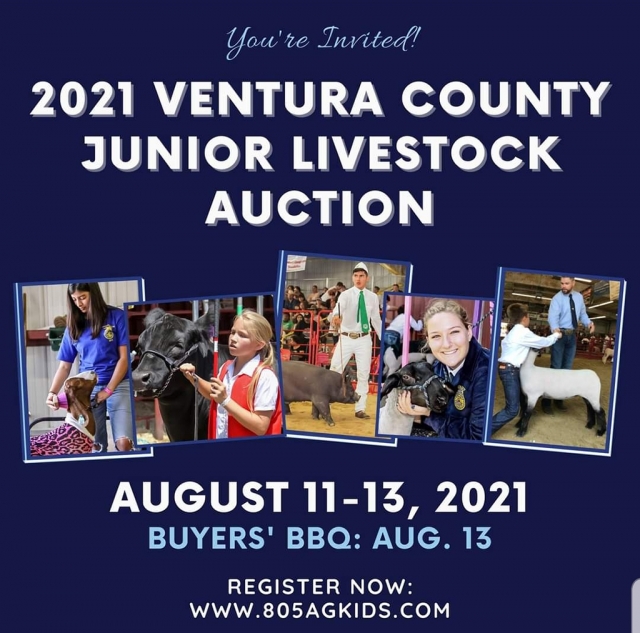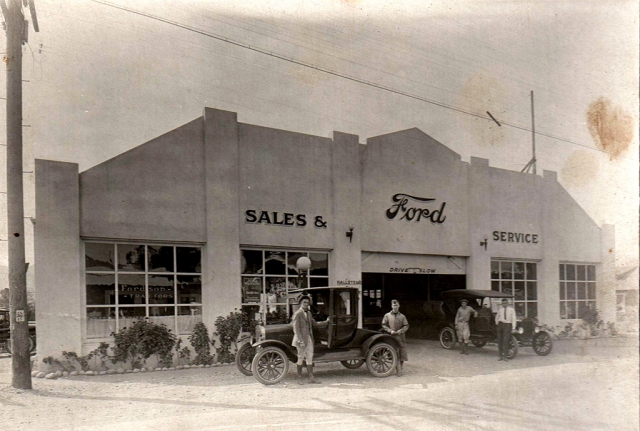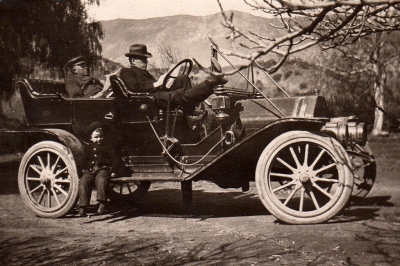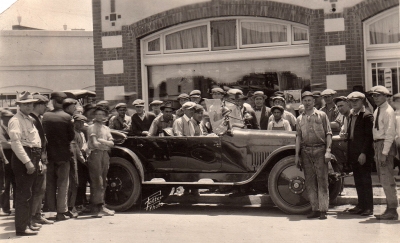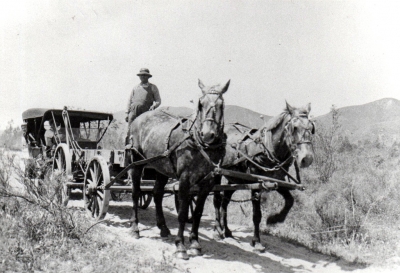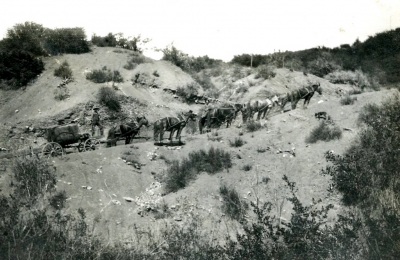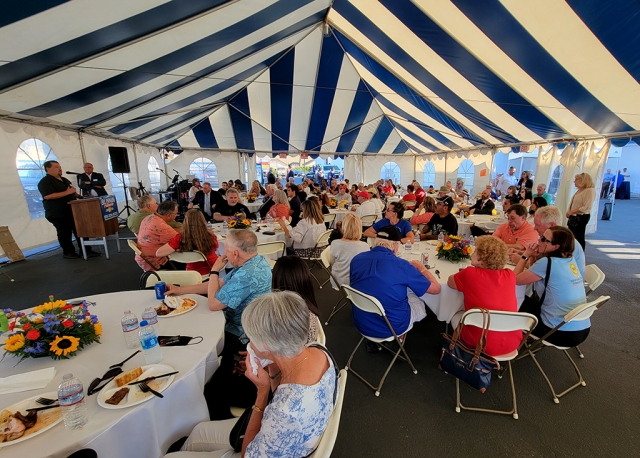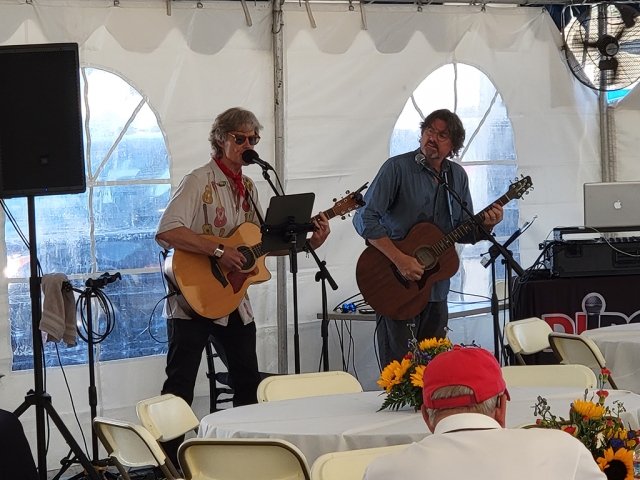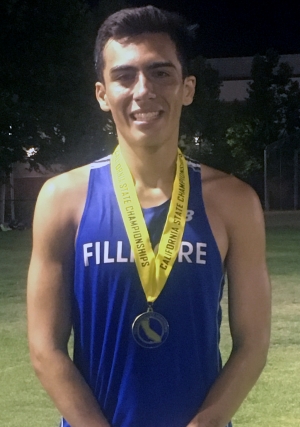|
By Anonymous — Wednesday, July 14th, 2021
Courtesy Fillmore History Museum Prior to 1833, the area which would become Fillmore and Bardsdale was under the governance of the Mission San Buenaventura. Few Europeans lived in the area and it was primarily used for cattle grazing. This changed in 1833. Mexico had gained its independence from Spain some years earlier and in 1833 the Mexican Government passed the Secularization Act which cancelled vast land concessions which had been given to the various Missions. Instead land was granted to individuals. To apply for a land grant, one had to make a request in writing to the area governor, describing the land he was interested in and giving its dimensions and boundaries. This would be accompanied by a map or diseño, illustrating what was requested in the petition. If approved, the governor would issue a formal declaration and the property would be surveyed and the boundaries established. The recipient then was required to build a house on the land; stock it with cattle; plant some portion in vines, fruit trees or grain. Don Carlos Antonio de Jesus Carrillo was the eldest of seven children born to José Raymundo Carrillo and Tomaso Lugo. They were married at the Carmel Mission in 1781 in a ceremony presided at by Junipero Serra. The Carrillos were a distinguished family, their line including an Archbishop of Toledo and a viceroy of Mexico. In 1829, prior to the Secularization Act, Don Carlos petitioned the Mexican government for Rancho Sespe. He already had extensive holding in what would become Santa Barbara and Ventura Counties, including Santa Rosa Island. Because he had a large extended family (Ten children and at least 50 grandchildren) he needed additional lands to support them. His petition he requested land that ran “from an arroyo called Piru which at its mouth unites with that of Camulos, to the hill which faces another arroyo named Mupu.” This was basically from the Piru River to Santa Paula Creek. He received his property in 1833 naming it Rancho Sespe. On the deed it specified 6 square. leagues or 54 square. miles or 34,560 acres. Two copies of the deed were filed, and this is what sowed the seeds of later disputes and even murder. On the second copy there was an erasure and instead of 6 square leagues it read 2 square leagues. This opened the door for later settlers to claim land which Don Carlos, and later owner, T. Wallace More, believed they owned. That dispute is another chapter in the story of Rancho Sespe. For further information go to https://www.fillmorehistoricalmuseum.org/rancho-sespe. The grant extended from Santa Paula creek on the west to Piru Creek on the east, approximately 17 miles. The ranch was centered about where the Sespe River meets the Santa Clara River. Three years after Don Carlos and his family received the ranch it was supporting 3,000 head of cattle, three or four droves of horses and mules, and approximately 400 sheep. An adobe was built as was required by the grant, but the Carrillo family did not live on Rancho Sespe. They were residents of Santa Barbara. Carrillo’s Mayordomo, Prudencio Ayala, who was in charge of the Rancho may have lived there. The Carrillos may have stayed there when they came to the Rancho for the “round-up” of the cattle. At that time there could have been as many as fifty family members and additional servants and guests. The adobe as it has been described could not have housed that many individuals. Grace Atmore, who died in 1943, remembered playing at the ruins of the adobe on her way home from the Santa Clara School. She remembered it as being rectangular with six or seven rooms. Eventually the school trustees felt the structure unsafe and had it torn down. According to some historians the adobe was just north of the Santa Clara River, west of the mouth of the Sespe and close to the historical sycamore tree on Hwy 126. Other writers of local history located the adobe just south of the point where the Sespe meets the Santa Clara. 1848 saw California becoming a territory of the United States. The Treaty of Guadalupe Hidalgo guaranteed the property ownership of the existing settlers, but the Federal government soon challenged the legal status of every Spanish/Mexican land grant. A Board of Commissioners was created to review the legal proof each claimant was required to submit. Don Carlos Carrillo filed his proof shortly before his death in 1852. His wife, Josefa, was his primary heir, but she died in 1853. In April of 1853, the Board of Commissioners ruled that the land grant was valid and encompassed six square leagues. This would soon be challenged but by then the Carrillo family would not be in the picture. In the summer of 1853, the probate court of Santa Barbara ordered that the ranch be sold at public auction with the proceeds to be divided among the Carrillo heirs. The successful bidders were three brothers, T. Wallace, Henry and Alexander More, who bought it for $17,500, a little over $600,000 in today’s dollars. After twenty years, this ended the Carrillo involvement in Rancho Sespe. Their son was probably the most well-known offspring, the actor Leo Carrillo. |
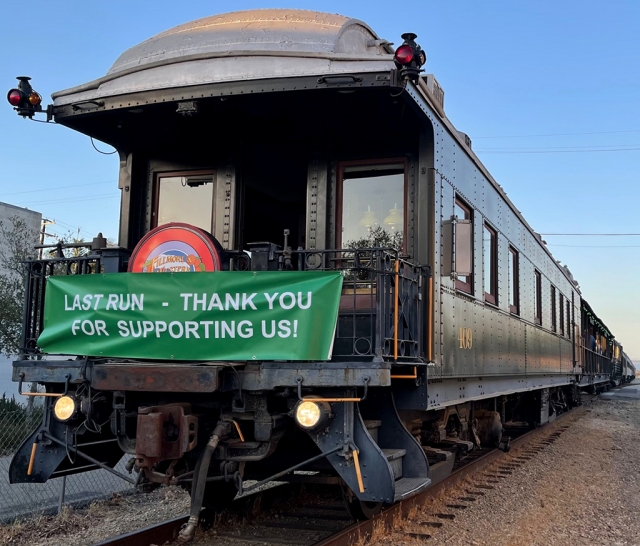 Pictured is Dave Wilkinson’s personal business car, Car 409, with farewell banner on back. It was built in 1929 for Santa Fe Railway as a superintendent’s car for a railroad executive. Photos courtesy Nichols Martinez, Onboard Service Manager (F&W), Vice President SCRVRHS. Enlarge Photo By Anonymous — Wednesday, July 7th, 2021
trains.com / Published w/o permission Fillmore & Western Railway has been sold. They owned seven locomotives and 30+ cars (passenger and freight). All cars range in years from the 1910s to 1970s. Due to a confidentiality agreement, no further information was available. |
|
By Anonymous — Wednesday, July 7th, 2021
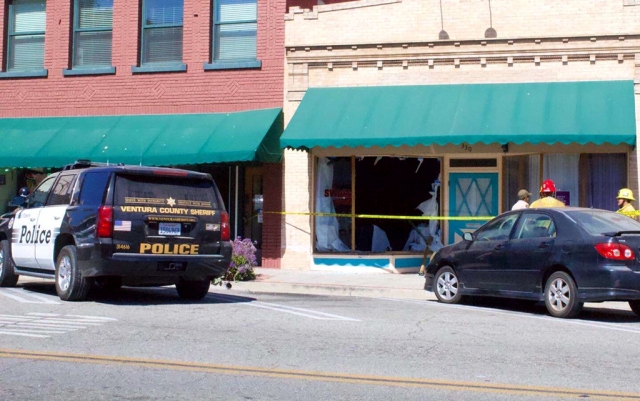 On Monday, July 5, at 3:15pm, the Ventura County Sheriff’s and Fillmore Fire Departments were dispatched to a reported vehicle into structure, with the vehicle fleeing the scene. The crash occurred in a fitness gym storefront at 330 Central Avenue. Sheriffs were able to locate the driver in the area of Central Avenue and Santa Clara Street. No one was injured in the crash. Cause of the crash is under investigation. Photo courtesy Angel Esquivel-AE News. Enlarge Photo |
|
By Anonymous — Wednesday, July 7th, 2021
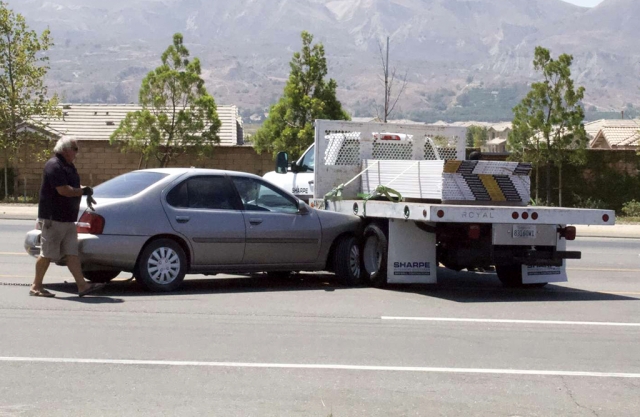 On Wednesday, June 30th, at 11:00am, Fillmore’s VC Sheriff and City Fire Department were dispatched to a traffic collision in the area of Santa Clara Street and Ventura Street. Arriving deputies found two vehicles involved - all occupants out with no injuries. Cause of the crash is under investigation. Photos courtesy Angel Esquivel-AE News. Enlarge Photo |
|
By Anonymous — Wednesday, July 7th, 2021
Buyer registration is now open for the 2021 Ventura County Junior Livestock Online Auction happening August 11-13, 2021. Register at: https://bit.ly/3q8jeEx The Ventura County Fair has been cancelled for the second year in a row. Our local Ag Kids need your support now more than ever. Join us for the 2021 Ventura County Junior Livestock Online Auction to ensure the 146-year tradition of buying our local 4-H, FFA, Grange & Independent Ag Kids' livestock projects continues. Auction Details: Register now for free BBQ tickets & details: https://bit.ly/3q8jeEx Learn more about this year's Auction in our Buyer's Guide, available at: https://bit.ly/378QMuM Thank you for your support of our local Ag kids! The Ventura County Fair has been cancelled for the second year in a row, however the Junior Livestock show will go on virtually this year. For more details visit www.805AgKids.com |
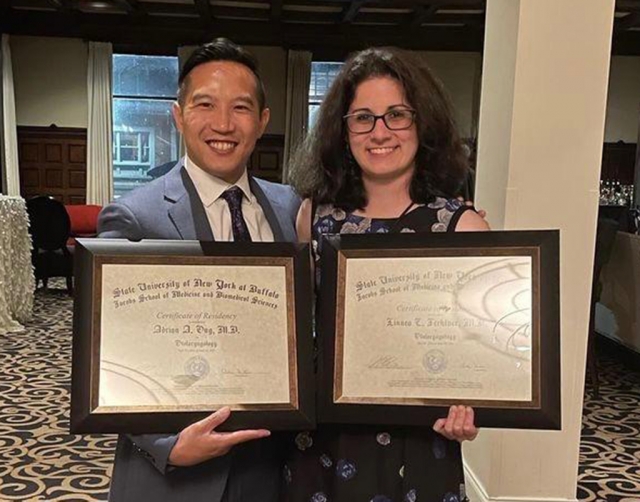 Dr. Adrian Ong and Dr. Linnea Fechtner. Linnea has been selected to pursue an Otology Fellowship in Sarasota, Florida as a Cochlear Implant surgeon. Linnea graduated from Case Western Reserve University School of Medicine in Cleveland, Ohio, Class of 2016. Dr. Ong graduated from the Jacobs School of Medicine & Biomedical Sciences at The University of Buffalo in 2015 and will pursue a Facial Plastic & Reconstructive Surgery Fellowship in Fort Worth, Texas. Enlarge Photo By Anonymous — Wednesday, July 7th, 2021
Congratulations to Fillmore’s Dr. Linnea Fechtner on the completion of her 5th year Otolaryngology chief residency in Buffalo, New York, 2016-2021. Linnea will now pursue an Otology Fellowship in Florida as a Cochlear Implant surgeon. There are two residents selected each year for this difficult surgical specialty. A cochlear implant is a small electronic device that electrically stimulates the cochlear nerve (nerve for hearing). The implant has external and internal parts. The external part sits behind the ear. The internal part is placed under the skin behind the ear during an outpatient surgery. An otolaryngologist-head and neck surgeon provides comprehensive medical and surgical care for patients with diseases and disorders that affect the ears, nose, throat, the respiratory and upper alimentary systems and related structures of the head and neck. Head and neck oncology, facial plastic and reconstructive surgery and the treatment of disorders of hearing and voice are fundamental areas of expertise. Linnea, daughter of Michael and Diane Fechtner, was raised in Fillmore on the “Fechtner Farm”, surrounded by avocado and orange orchards. She attended St. Bonaventure High School, graduating as 2008 Valedictorian, before going on to graduate from the University of Notre Dame, and the Case Western Reserve University School of Medicine in Cleveland, Ohio, Class of 2016, where she earned Honors with Distinction. Understandably, Linnea’s family is incredibly proud of her accomplishments and for choosing a career which will have an impact on the lives of so many: parents Michael and Diane, grandparents Mercy and Lupe Ramirez and Howard and Linda Fechtner; sister Sigourney and husband Andrew, and nephew and niece, Jackson and Miriam Castel de Oro. I Peter 4:10 – “God’s gifts of grace come in many forms. Each of you has received a gift in order to serve others. You should use it faithfully.” |
|
By Anonymous — Wednesday, July 7th, 2021
[Courtesy Fillmore History Museum] Excerpts from “Horseless Carriages Come To Ventura County” by Edith Moore Jarrett in Old Timers’ Tales of Fillmore. Edith was a Fillmore native and founder of the Fillmore Historical Museum. In March 1916, Fillmore’s weekly newspaper proudly proclaimed, “1510 AUTOS OWNED IN VENTURA COUNTY!" Ernie Smith, like all young fellows, could tell you the make of anything on wheels, so after he read that item one Sunday afternoon, he went out to the road by his home east of town, sat down under a tree, and tallied every auto that passed. A total of 134 when by in 4 hours, and guess which model scored the highest. Yes, the Model T “Tin Lizzie” with 46. See if you can remember (2021 - or every heard of) the other models he saw that day. There were 18 Dodges, 10 Maxwells, 9 Buicks, 8 Studebakers (the company had retooled from buggies to cars; remember the “E M F” – Every Morning Fixit?), 6 Cadillacs, 6 Chalmers, 4 Overlands, 4 Hupmobiles, 3 Reos, 3 Chandlers, and 2 Regals. Those who got honorable mention for one each were Grant, Lexington, Locomobile, Paige, Winton, and Apperson (the “Jackrabbit,” remember?). By 1915, John Deere had moved his plows and cultivators over, to manufacture the “Bilt-Well Six” in four models: A 2-passenger roadster “with mohair top,” A 4-passenger “Chummy Roadster,” A 5-passenger touring car at $1295, and a seven-passenger model at $1800. George young sold them, with headquarters at the Elkins Ford garage. He also sold Maxwell roadsters “with one man top” for $655 that he said got 21.8 miles per gallon, and five passenger models for $725. But he sold Dr. William Manning a valley “Bilt-Well six” roadster for his house calls. in 1912, Harvey Smith was selling Paiges and Hudson's, advertising that “all have self-starters.” the Moore’s Rio didn't. We bought it from a fellow who sold it just to get the 1913 model with self-starter. He was smart. We cranked that big thing, a quarter turn at a time, for nine years before we got a Chevrolet with a starter. Of course, my folks had to get drivers licenses. I was only 14, so didn't think I was old enough to need one. I just drove and no questions asked. The license was printed on an eight by eleven sheet of paper which stated that the applicant was certified as a driver for life. Mama showed hers to the CHP just for fun when she was eighty-seven and still driving and threw the whole office into a tizzy. Of course, she had had the new kind all along, too. We didn't push a button to turn on the lights of that 1912 Rio. There was a brassy looking tank of Prestolite, a fuel sort of like propane, on the running board, and we turned in the whole thing when we needed a refill. Turning on the headlights was a family affair, and we all got out of the car to watch. First, the kid elected to stand by the lamps had to unscrew the latches of the brass-bound doors of the headlights, swing them open on their hinges, and hold a lighted match ready. Then the kid stationed at the running board with a wrench - after he found it in the toolbox - was supposed to give the valve on the Prestolite tank a slight turn. Since it always stuck, he’d turn it on too much, and if it didn't blow out the match, the gas would flare up and singe the match holder. “Turn it down!” we'd all yell, the wrench operator would jerk it clear off instead, and they'd have to start over. Usually, it took several matches before they got synchronized. When Papa said, “We'd better start home now. Have to milk cow before dark,” we knew he was really thinking about getting there before we had to turn on those little lights. It took a little while for people, to get used to cars. Several have told us how Judge Elkins started proudly down Central in his new 1912 Model T, forgot how to stop it, and rolled along yelling frantically, “Whoa! Whoa!”. Somebody should have told him, “Just step on any two pedals.” Later on, John Opsahl sold the Judge a Dodge with four on the floor, but he still had a problem. When he took the family to Santa Paula, they all dreaded that short climb up Atmore Hill, just west of the present Rancho Sespe bunkhouse. It was pretty steep until the road was cut down in 1916 to be paved. Few cars could make it up in high gear. The judge solved that one. He’d stop at the foot of the little grade, order family out to push if necessary and drive up in low. He didn't find out for some time that he could shift those gears back from high to second or low while he climbed. There was another hill that no sane driver would ever think of trying to climb with a car. That is, no one but John Opsahl, our first wheeler dealer. The Big Hill started up the Little Sespe to the oilfields from the boardinghouse at the foot where teamsters could get extra horses and a lunch before they started up that 34 % grade dirt road. But in 1916, John made it with his Dodge demonstrator and showed off “some whirligigs at the crest,” as the Herald put it. After that he advertised, “Dodge, the Car That Climbs the Big Hill Any Time.” John could have sold sand to the Sahara. Two Elkins brothers, Carl, Jr., and Reed had the Ford garage and advertised “enough Ford parts to assemble a complete car.” And you know what John did? He sold Judge Elkins and sons Carl, Jr., Bill, and Hess, each a Dodge the same week. Only Reed could resist the fast talker. John was always showing off in his Dodge demonstrator. Beyond the Sanitary Dairy, the old road had two unbanked right-angled corners on property boundaries. One corner had a water tank for the sprinkling wagon. John bet some fellows he could make both corners at 60 miles an hour, and, collecting a gallery of witnesses, away he went. Well, the Doge got around the first corner but took with it just one leg of that water tank tower. John lost his bet, but at least he got a free shower. Two young men-about-town. Joel Schwartz and Hub McCampbell, heard about it and decided to give their dates a scare. One evening Hub aimed his Maxwell right at the leg of another water tank, planning to swerve at the last second to miss it. He did. But the rear end of the car swung around, hit that leg, and down came the whole tank just behind them. The girls weren’t the only ones scared. Well, the hitching racks have disappeared. Model Ts and a lot of other models are collectors’ items, and these days we just move our housework into a self-contained RV and think we’re on vacation. “Horseless carriages killed Buckhorn, which was about to become a town,” Harry Felsenthal said, “because people could get to Fillmore with their cars.” Horseless carriages brought the oil workers’ families down from Torrey Hill and eventually put the Southern Pacific’s passenger trains and a lot of freight cars out of business. Horses and cars have switched places as a status symbol. If you can support a horse or two, you’re landed gentry. As J. P. Morgan said about yachts, “If you have to ask about the upkeep, you can’t afford one.” But there probably more horses loafing around the county now that the 1,510 autos the Herald bragged about in 1916. |
|
By Anonymous — Wednesday, July 7th, 2021
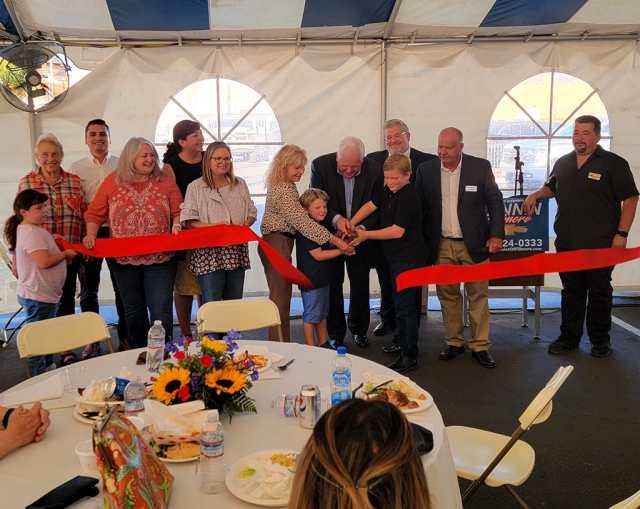 The long awaited Grand Opening for the new Fillmore Bunnin Chevrolet dealership was well attended. An enthusiastic crowd packed the main tent where everyone enjoyed many food choices while listening to live music. Congratulations to Mr. Bunnin and his right-hand-man, Shane Morger, who created the whole event; and a hearty Welcome to Fillmore! Enlarge Photo |

